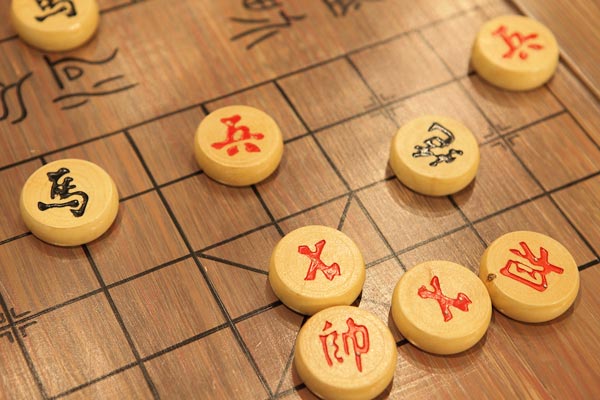Wuyi Rock Tea (Dahongpao) Production Techniques, a local traditional handicraft in Wuyi Mountain City, Fujian Province, China, and one of China's national intangible cultural heritages.
The unique "rock-bone flower fragrance" of Wuyi Rock Tea (Dahongpao) is created by the special ecological environment, climatic conditions and exquisite traditional production techniques of Wuyi Mountain. Its traditional production process has a total of 10 processes, which are interlocking and indispensable. Among them, the key links for tea quality are "complex withering", "making green by looking at green, making green by looking at big", "running water and returning to the sun", "double frying and double kneading", "low temperature and long baking" and other links.

Historical Origin
There are already legends about tea making in the Han Dynasty. More than 2,000 years ago, Emperor Wu of the Han Dynasty "worshipped Wuyi Jun with dried fish" and was very impressed after receiving Wuyi tea tribute from his subordinates. The great poet Su Dongpo of the Song Dynasty wrote "Ye Jiachuan" based on this, and anthropomorphized Wuyi tea as Ye Jia.
- Poems and articles about tea making and tasting were seen in the Tang Dynasty. Wuyi Mountain in the Tang Dynasty had been named "Famous Mountains and Great Rivers" by the court, and Wuyi tea was also regarded as a treasure.
- Exquisite dragon-shaped cake tea was made in the Song Dynasty. In the Song Dynasty, more and more literati and poets lived in seclusion and traveled in Wuyi Mountain, and tea affairs flourished.
- Tribute tea was officially made in the Yuan Dynasty. Since 1279 AD, Gao Xing, who worked in Fujian, supervised the production of tribute tea and was appreciated by the court.
- Loose tea and fermented tea were made in the Ming Dynasty. With Zhu Yuanzhang's edict of "abolishing dragon-shaped tea and changing to loose tea", Wuyi tea farmers changed the production of cake tea to strip-shaped tea. At that time, it was mostly steamed green loose tea.
- Semi-fermented oolong tea was made in the Qing Dynasty. Wuyi Rock Tea (Oolong Tea) was first produced in the Ming Dynasty in the 16th century. After a long period of development, the production process of Oolong Tea was perfected in the mid-Qing Dynasty.
- During the Republic of China, the production process of Oolong Tea became more scientific and rose to theory. After the outbreak of the Anti-Japanese War, most of the tea bases along the coast were trampled, so a group of knowledgeable people in the tea industry selected Wuyi Mountain, which produced famous teas and was not reached by the Japanese invaders, as a development and research base.
After the founding of New China, especially China's reform and opening up, the production of Wuyi Rock Tea has developed. Over the past 50 years, the output of Wuyi Rock Tea has increased year by year. Dahongpao has been successfully bred, basically maintaining the characteristics of the mother tree Dahongpao, and has been put on the market in large quantities; Wuyi Tea Art has traveled far and wide and has been exported overseas; "Protected Product of Origin" and "Hometown of Chinese Tea Art" have been crowned, and Wuyi Rock Tea (Dahongpao) has regained its youth.

Technology Features
Historical Heritage
The production process of Wuyi Rock Tea (Dahongpao) is a continuation of the past and the future, with inventions and creations. It takes the essence of the method of making fried green tea and small black tea, and absorbs the advantages of black and green tea in color, aroma and taste, forming the unique creation technology of Wuyi Rock Tea (Dahongpao).
Everything always develops from low to high, and innovation is made on the basis of inheriting traditions, which conforms to the law of development of things. It is obvious that the production process of Wuyi Rock Tea (Dahongpao) has the characteristics of historical inheritance.
Process
In the entire process, the compound withering hole of "two sun-drying and two air-drying", the shaking and sieving for up to eight hours to make green, the heavy fermentation, and the leaf edge is cinnabar red; "double frying and double kneading"; the raw tea is fully fired, and finally the low temperature and long baking for about 7 hours are all unique to the production process of Wuyi Rock Tea (Dahongpao).
Skills
The entire production process of Wuyi Rock Tea (Dahongpao) has many "unique skills", such as the key process of shaking and sieving to make green tea, which determines the quality of rock tea. Among them, there are "making green tea according to the sky, making green tea according to the green tea" and "flowing water and returning to the sun", and in the final "low temperature and long baking", relying on the visual impact and hand feel of temperature, the temperature of each period is constantly adjusted and controlled to achieve the taste and aroma of fire, which is amazing. No wonder Liang Zhangju of the Qing Dynasty exclaimed that "Wuyi baking method is the best in the world".
Quality
Wuyi Rock Tea (Dahongpao) has excellent production technology, which is reflected in the excellent quality of tea. Its main characteristics are "green leaves with red edges (three reds and seven greens)", lingering fragrance after 7 brews (long-lasting brewing), orange-yellow soup color (amber), bright leaf bottom, clear and long aroma, mellow and fresh taste, and obvious sweet aftertaste; in appearance, it is in the shape of long eyebrows, known as "dragonfly head and frog skin". In short, its outstanding natural taste and natural floral fragrance are the concentrated expression of the characteristics of rock rhyme.
Tasting
Wuyi rock tea is very particular about tasting. After brewing with boiling water in a covered cup, you should first smell the fragrance, then observe the color (the change of soup color), and then taste it. Based on the folk drinking customs, it was excavated and sorted by the people of Wuyi Mountain and rose to "Wuyi Tea Art", with a total of 27 steps, of which 18 are easy to perform.

Process flow
Picking
- Adopt the open-face picking standard, select one bud with three to four leaves, and require the new shoots and leaves to mature and stretch. When picking, keep the fresh leaves intact to avoid damage.
- The picking time is concentrated around the spring Grain Rain, when the tea contains the most substances.
Withering (two sun-drying and two air-drying)
- Through alternating sunlight withering and indoor withering, the fresh leaves lose about 15% of their water, and the leaves are soft and drooping.
- Use a unique compound withering method: spread the green tea on a bamboo sieve, move it indoors to dry it after sun exposure, repeat twice, called "two sun exposure and two airing".
Making green tea
- The core process, through 8-10 hours of shaking and standing alternately, the edge cells of the leaves are damaged and oxidized, forming the "green leaves with red edges" feature.
- Following the principle of "making green tea according to the sky, making green tea according to the green", the aroma of the tea leaves changes from grass to orchid during the process, and the leaves gradually become "spoon-shaped" curved.
Double frying and double kneading
- After withering, it is fried and kneaded twice to shape the "three-section color" strips and "frog skin-like" surface, which is the iconic process that distinguishes Wuyi rock tea from other oolong teas.
Baking
- The key to quality setting: through step-by-step baking at 100-145℃, the fire is used to adjust the fragrance and taste.
- Long roasting at high temperature in winter (up to 145℃), short roasting at low temperature in summer (about 100℃), with a few days between each round of roasting, forming a unique flavor of "70% fire power and 30% fragrance".

Inheritance and protection
Inheritance value
The exquisite craftsmanship and superb skills of Wuyi Rock Tea (Da Hong Pao) have important scientific research value:
- The double withering of "two sun-drying and two air-drying" makes the fresh leaves lose water properly, otherwise the fresh leaves will become "dead leaves" if they lose too much water, and it will be difficult to make green tea if they lose too little water;
- Screening and shaking green tea is the key to determining the quality. External factors have a great influence on internal factors. "Looking at the weather to make green tea, looking at the green tea to make green tea" means to flexibly grasp the best temperature and humidity conditions for fresh leaves under changing climate conditions. There is also the technique of shaking green tea and making it by hand, thick spreading and static placement, and combining movement and stillness to make the fresh leaves go from elastic to soft, and from soft to hard green, commonly known as "walking water back to the sun". By running water, the water in the stem veins is accelerated to be transported to the leaf surface, and the rich contents in the stem veins are also brought to the leaf surface, so that the changes in the internal quality are promoted while the evaporation of water is restricted, so that the physical changes and chemical changes are closely combined;
- During the long-term baking, the temperature changes from high to low, and the temperature at each time period should be just right, so as to adjust the taste, aroma, etc. through low-temperature long-term baking. All of these have rich scientific connotations and are still important scientific research topics for studying the relationship between climate and quality of oolong tea, and the relationship between internal changes and the formation of floral fragrance. The craftsmanship of Wuyi Rock Tea (Dahongpao) provides a useful reference for this topic.
Inheritance Status
The traditional production process of Wuyi Rock Tea (Dahongpao) is very complicated and cumbersome. In the inheritance of its entire process, many tea manufacturers have not paid enough attention and tend to simplify it. Some even avoid traditional processes and do another set, causing the traditional process to face the danger of extinction. In particular, some techniques that cannot be replaced by superb skills rely entirely on the words and deeds of experienced old tea masters. They urgently need to be rescued in time and strictly protected.




